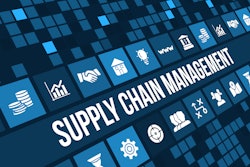
The past decade has seen businesses introduce ambitious sustainability goals, as consumer attitudes, shareholder demand and government regulations have urged companies to fight for the planet’s health. As pressure increases, procurement teams may hold a different perspective on “green” buying methods.
A new report from Spend Matters reveals that regulatory compliance is emerging as a top driver of Environmental, Social and Governance (ESG) investment from procurement teams, as recent policies and legislation have aimed to reduce carbon emissions to reach climate neutrality. In the EU, the European Green Deal and Corporate Sustainability Reporting Directive have caused companies to introduce comprehensive climate-friendly strategies. In the U.S., individual states are taking action to influence ESG initiatives, including New Jersey, California and New York.
Many corporations are accordingly adjusting supply chain practices as investments have increased in renewable energy and emission-limiting machinery. This is seen in The Sustainable Procurement Pledge (SPP), which highlighted companies striving to introduce progressive measures. For example, Bayer aimed to gather information on supplier emissions data to better inform buying processes, while GSK looked to improve the percentage of spend that is “sustainably sourced” through tailored management processes tied to recognized certifications and non-governmental organizations.
Other corporations highlighted in the SPP paper have increased due diligence on suppliers to align with regulations. Tailored compliance measurement and category-specific audits have helped procurement teams track against broadened regulatory requirements.
Strategies specific to each industry will vary, but to successfully track ESG metrics, teams need to develop a robust plan anchored on technology. By making use of available technology, businesses can help their teams identify suppliers and partners who support compliance and sustainability goals.
Procurement’s Role in Setting—and Achieving—ESG Goals
With access to nearly all business functions, procurement is critical to driving efficiency, resilience, and eco-friendly commitments. That is why 51% of global businesses have a sustainable procurement policy in place that is designed to reinforce their value chain, according to a survey conducted by the Stanford Business School.
What’s more, procurement has become a focal point for decarbonization efforts. A report from McKinsey revealed that 80 to 90 percent of greenhouse gas emissions are “Scope 3,” which includes embedded emissions from purchased goods or services. As the primary interface with the upstream supply chain, procurement plays an integral role in shaping an organization’s ESG footprint, directly through purchase decisions and indirectly by influencing product design.
To best advance these efforts, it’s critical to implement software that tracks every touchpoint with suppliers and partners. Procurement’s unique role within the organization can help provide transparency across every level of the supply chain, but this is only possible with technology that accounts for supplier identification and sustainable sourcing.
An ideal technology solution can track the latest policies from regulatory bodies, including specific details and steps procurement teams can take to ensure they meet the latest requirements for their location and industry. A current and personalized application can provide the tools procurement teams need to meet climate regulations.
Setting Sustainability Efforts up for Success
The mounting pressure of regulatory compliance in the form of industry-wide ESG requirements prompts stakeholder involvement and another layer of internal complication. Considering that a 2023 Economist Impact report reports just 48% of C-suite leaders have confidence in procurement to meet sustainability goals, it’s critical for procurement to better set their efforts up for success.
One strategy is to develop a set of goals that are tailored to an organization and translate to operations. That means incorporating goals of internal partner functions like legal and finance, performing supplier due diligence to ensure they enhance the value chain, prioritizing sustainable sourcing and more.
The Spend Matters study shared three tactics for reaching sustainable supply: engaging the C-suite to understand the material impact of suppliers, setting cross-functional improvement goals and executing against goals while self-funding new capabilities. This may seem complex and daunting, but engaging leadership, along with all stakeholders in the procurement function, is the best path to ensuring sustainability success and uninterrupted ROI.
Investing in technology can help in this process by providing analytical spend management data and up-to-date metrics tallying against sustainability KPIs. This reduces risk through guided buying capabilities and supplier self-assessments that validate climate-friendliness and diversity credentials.
The bottom line is that success within ESG means investing in the cause. A 2023 Deloitte CPO Survey found that firms with the highest ability to deliver value in the face of market complexity had approximately twice the investment in ESG as a percentage of the budget spent on these initiatives than their peers. Organizations would be smart to keep that in mind, especially amid an increasingly volatile procurement landscape.
Tracking ESG Progress with AI and Other Tools
For many companies, the most significant challenge with this process is the lack of availability and trust in the data for organizations to act. Fortunately, modern technology, including AI, offers procurement teams visibility and transparency by tracking performance and ensuring efforts are making a direct impact.
Given the expansive nature of today’s business networks—and the relatively small number of employees leading procurement teams—using AI-powered tools to monitor supplier performance is a necessity. Solutions like a supplier management dashboard can help companies record, report and act on actual data, helping resolve issues in real-time. This single, unified view of the events happening across their supply chain also allows procurement teams to report the data for mandatory and voluntary frameworks in an auditable way.
Yet, AI technologies require more energy than other, less complex computing platforms. That is why it’s vital to only utilize AI when it is most relevant to business objectives. Otherwise, organizations risk wasting energy in the effort to reduce it.
Using these innovative tools to monitor sustainability within procurement is already becoming foundational to business success—allowing companies to plan their future with actionable, measurable insights that can help strengthen their ESG efforts in a way they couldn’t before.
When done right, these efforts can not only push procurement teams to build more robust business networks but also expand their processes and methods to operate more efficiently.



















